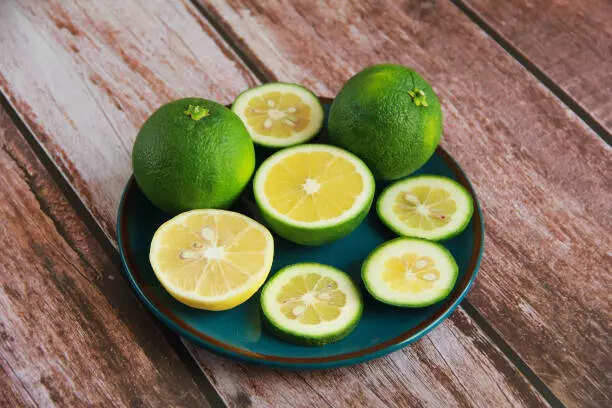ARTICLE AD BOX

Walk into any modern restaurant menu, and chances are you’ll see a word that once seemed exotic: yuzu. Alongside it, sudachi and kabosu—three Japanese citrus fruits that are suddenly everywhere.
From cocktails in New York to dressings in Paris and even desserts in Mumbai, these bright, aromatic fruits are changing the way we think about flavor.

What sets them apart? Unlike the everyday lemon or lime, Japanese citrus brings complexity. Yuzu, perhaps the most famous of the trio, has a fragrance that’s been compared to a mix of mandarin, grapefruit, and flowers. It doesn’t just add sourness; it adds character.
A few drops of yuzu juice or zest can transform a simple sauce, chocolate, or even a gin and tonic into something layered and memorable.Sudachi, smaller and sharper, is the quiet powerhouse of Japanese kitchens. In Tokushima, where it’s most widely grown, people squeeze fresh sudachi over grilled fish, hot noodles, or even beer. Its acidity is bracing, but with a delicate aroma that elevates rather than overpowers.
Kabosu, on the other hand, has a gentler tartness. It’s often paired with sashimi or soups in Oita, its home region, where diners say its freshness makes dishes feel lighter and more digestible.

Their global rise owes much to chefs looking for flavors that stand out. High-end restaurants were the first to experiment, grating frozen yuzu zest over oysters or stirring kabosu into vinaigrettes. But the fruits have since leapt into mainstream culture.
Yuzu-flavored sparkling waters, jams, and even snack foods now stock supermarket shelves, while bartenders from Tokyo to Toronto are swapping lemon wedges for sudachi slices.Part of the appeal is their ability to bridge cuisines. In France, yuzu has become a pastry favorite—its perfume works beautifully in macarons and custards. In California, chefs use sudachi in ceviche or salad dressings, praising its clean edge.
Kabosu’s mellow tartness finds its way into marinades and even plant-based cooking, where it adds brightness without overwhelming subtle flavors.

There’s also an element of wellness behind the craze. Like other citrus, these fruits are rich in vitamin C and antioxidants, but in Japan, they carry cultural weight too. Yuzu is central to yuzuyu, a winter solstice bath where whole fruits float in hot water, believed to ward off illness and bring good fortune.
That blend of tradition and trend makes them feel more than just ingredients—they’re experiences.Of course, supply is still limited. Most yuzu, sudachi, and kabosu are grown in specific Japanese regions, and cultivation is labor-intensive. But demand is rising so quickly that farmers are expanding exports, and growers in other countries are beginning to plant trees. What was once a rare chef’s secret is fast becoming a global pantry staple.The citrus craze isn’t about replacing lemon or lime—it’s about expanding the spectrum of what sourness can be. Yuzu brings perfume, sudachi brings punch, kabosu brings subtlety. Together, they’re reshaping not just Japanese cuisine, but the way the world thinks about freshness and flavor.



.png)
.png)
.png)
















 2 hours ago
3
2 hours ago
3








 English (US) ·
English (US) ·